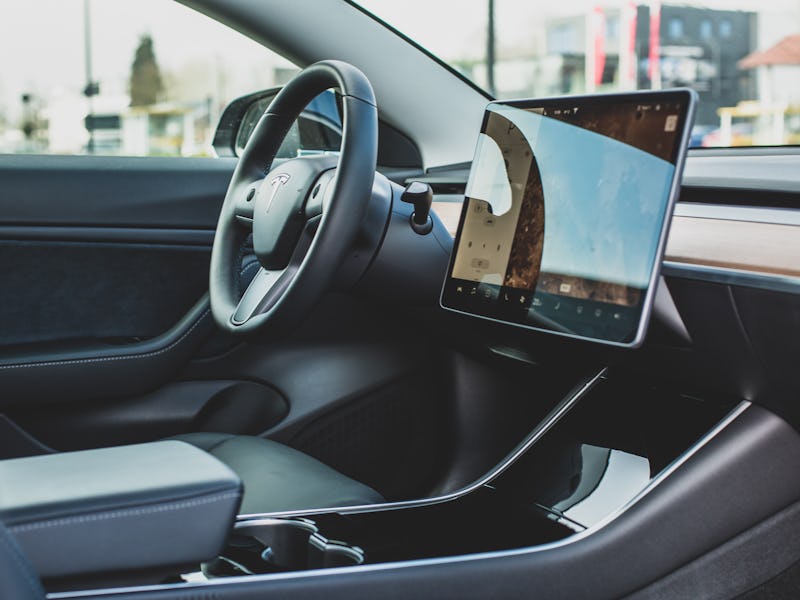Tesla vs Waymo: Why Elon Musk's Design Choice Could Win Autonomous Driving

Tesla bucked the trend when it unveiled its autonomous driving system back in 2016 by eschewing the type of depth-sensing lidar system used by practically every other automaker. One expert claimed in an interview this week, however, that this bet may deliver Elon Musk’s firm an important advantage in the race to deliver full hands-free driving.
Musk, who began introducing Tesla’s self-driving sensor suite onto every new car in October 2016, claims that the eight included cameras are enough to support “level five” autonomous rides — no bulky lidar shooting lasers required. Lex Fridman, an autonomous driving researcher at MIT, described it on the Joe Rogan Experience podcast this week as the “big throwdown between Elon Musk and everybody else.”
Lidar, short for Light Detection and Ranging, bounces a laser beam off objects around the car and times how long it takes to return. This distance information is not enough to drive a car, but the data is normally used alongside other sensors like cameras. Waymo, which started life as Google’s self-driving car project, has been testing its bulky-headed cars in a variety of conditions.
"“It’s a little bit more futuristic, so it’s a longer-term solution."
But just like how Waymo doesn’t depend on lidar alone, Tesla isn’t just using eight cameras to drive. It augments this data using a radar and 12 ultrasonic sensors which detect objects a user may otherwise miss due to poor visibility or blocked view, similar to the lidar. To achieve all this, Tesla has started producing an A.I. chip capable of processing 2,000 frames per second to power this feature, which will slot into existing cars. Drivers will be able to pay a fee (currently $6,000) to unlock the software and buy the computer.
“If you’re going to build artificial intelligence systems…camera is the way to go, because you can learn so much more, you can see so much more,” Fridman said. “The richer, deeper sensor is the camera, but it’s much harder. You have to collect a huge amount of data. It’s a little bit more futuristic, so it’s a longer-term solution.”
Data is perhaps less an issue for Tesla than it is for other automakers, as Tesla already has nearly half a million sensor-equipped vehicles out on the road harvesting data.
With that in mind, it’s perhaps understandable that Tesla chose to ship its cars with cameras. After all, if people are spending up to six figures on your firm’s cars with the promise of full autonomy, you want the future-proofed system, right?
Rather than characterizing cameras as a safer long-term investment, Musk has frequently suggested that lidar is something of a non-starter. During last month’s Autonomy Investor Day, he dismissed lidar as a “fool’s errand,” “expensive,” “unnecessary,” and argued that anyone depending on it is “doomed.” In a February 2018 earnings call, he called lidar a “crutch.”
Musk isn’t alone in this belief. Jianxiong Xiao, founder of California-based autonomous car technology firm AutoX, told Inverse in April 2017 that the sensors “do not satisfy functionality requirements for automotive hardware,” as they struggle when snow and rain collects on the sensor and they lack long-term durability. However, Xiao’s team has since built lidar into the mix to power food deliveries at CES in January.
More researchers appear to be following this trend. A team at Cornell University recently claimed in a research paper that cheap cameras can be as effective as lidar when mounted properly. Anthony Levandowski, a former Google engineer that said in 2016 “we have got to start calling Elon on his shit” around lidar, has opted not to use lidar for his self-driving truck startup Pronto.
The big question is time. Musk has claimed that Tesla could have one million robot taxis on the roads by next year. Waymo has been running limited trials with its own taxi service in Phoenix, but these involve a safety driver. Out of the two, Waymo is the first and so far only autonomous car firm that has been granted a license in California to try its autonomous cars without a safety driver ready to take over.
“Today, to build a safe vehicle, you have to go lidar,” Fridman said. “Tomorrow, however you define tomorrow…camera is the way to go.”
If Musk is right, tomorrow could come sooner than many expect.